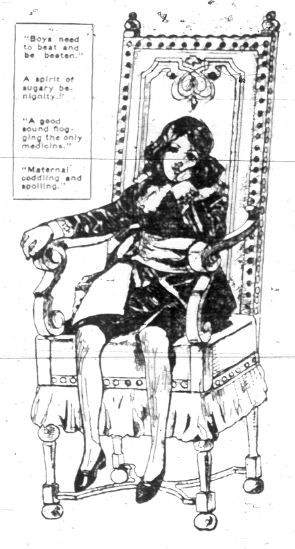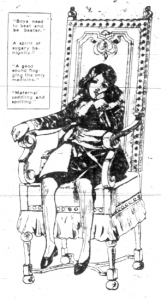
 The idea of queer place goes beyond simple physical geography, as a queer place can be a “place” in the past or a passage hidden within an old volume. Newspapers are, perhaps, the most readily-available sources of otherwise sporadic information that pertains to everyday queer phenomena. Regardless of the time period, headlines and back stories reveal constant battles between oppositiong genders and sexualities.
The idea of queer place goes beyond simple physical geography, as a queer place can be a “place” in the past or a passage hidden within an old volume. Newspapers are, perhaps, the most readily-available sources of otherwise sporadic information that pertains to everyday queer phenomena. Regardless of the time period, headlines and back stories reveal constant battles between oppositiong genders and sexualities.
This essay is excerpted from Stewart Van Cleve’s upcoming book, Land of 10,000 Loves: Queer Places in Minnesota History, from the University of Minnesota Press – Ed.
At the dawn of the 20th century, Minnesota’s middle class was booming and anxious to scale the social ladder. In the Twin Cities, companies were particularly attuned to the populace’s constant quest for goods and services—especially for those products that suggested the buyer’s wealth and prestige. Local papers carried advertisements for everything from women’s products that made voluminous hair to men’s living quarters that guaranteed social respect. These ads often evince the underlying distress that many up-and-comers had over their attractiveness, success, and–of course–their particular brand of gender expression.
This consistent feeling of unease was not limited to adults. Early 20th-century parents subjected their children to expectations that mirrored those of older people. A supplement of the Minneapolis Journal (ancestor of the Star Tribune) called The Journal Junior was, literally, a smaller version of the “adult” paper. It carried entertaining tales (and ubiquitous comics) of boyish adventure and girlish imagination for decades, and likely helped to construct the local gender identities of an entire generation. Newspapers frequently assisted these businesses (for a price) and presented depictions of girls and boys to sell toys, games, and garments. “Little women” were expected to be precious angels with hopes of becoming married homemakers, while boys were drawn as briefly mischievous future heads of household.
On Tuesday, February 18, 1908, The Minneapolis Journal took out a full-page ad for its subsequent Sunday Magazine. Depicting a cartoon boy with long hair, lacy stockings, and bad posture (looking remarkable like a miniature Oscar Wilde), it proclaimed “Feminzation of Boys is a subject handled without gloves by G. Stanley Hall, President of Clark University.”
The ad continued: “There is something the matter with the boy in the early teens who can truly be called a perfect gentleman, as his lady teachers wish him to be,’ declares Dr. Hall, whose articles on childhood’s problems have won him a national reputation. The article will appear exclusively in next Sunday’s Magazine of the Minneapolis Journal.”[i] The Journal’s notice gives a taste of Hall’s ideas concerning the problem; snippets surrounding the effete boy suggest that “a spirit of sugary benignity” results from “maternal coddling and spoiling.” Women were to blame, but all was not lost. Hall declared that “boys need to beat and be beaten,” and that “a good sound flogging is the only medicine.” The ad ended with the promise of argument: “A number of well known women have written replies to Dr. Hall for the succeeding issue.”
Unfortunately, and with an understandable need to conserve space, the Minnesota Historical Society transferred its vast newspaper collections to a problematic format—microfilm—and scanned every page onto the new media. The tedium of this process produced many mistakes, including a numerical error that accidentally omitted Dr. Hall’s article (not to mention dozens of issues of The Sunday Magazine). As no original master set was preserved, Hall’s recommendation (and alas, the replies of “well-known women”) were irreversibly destroyed. Historians will never know the full extent to which Hall’s theories were accepted or rejected by local mothers, but the article’s preserved advertisement is worthy of immense historic value on its own. Rarely can one find a literal advertisement for gender, let alone one that advertises a means of “fixing” nonconformity.
[i] The Minneapolis Journal, Home Edition, 2/18/1908, page 6.